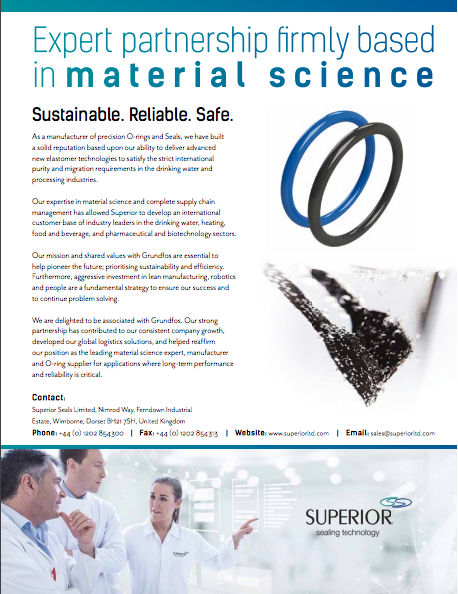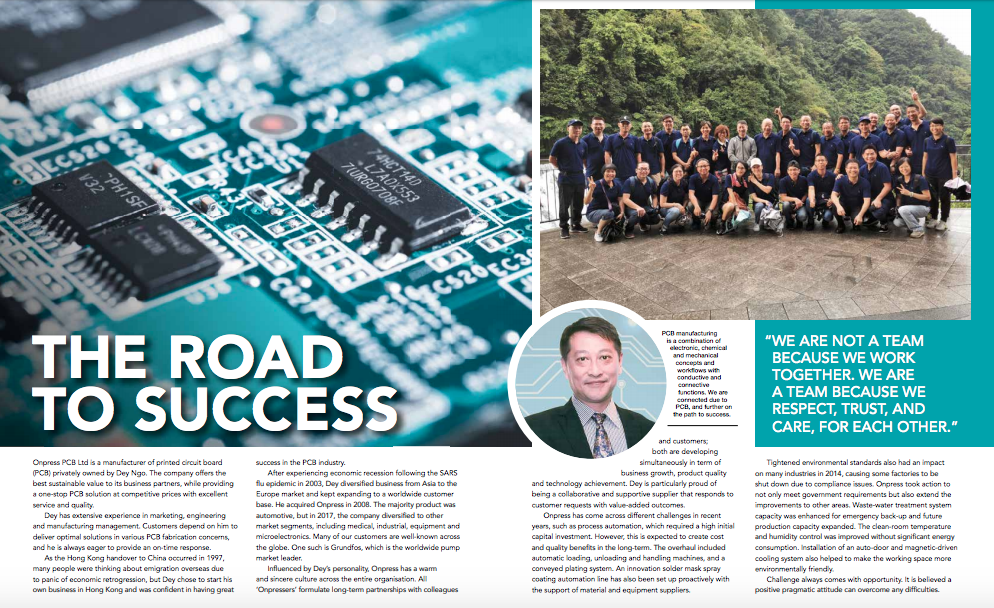On the surface, there is no obvious link between LEGO and Grundfos, Mads Nipper’s past and present place of employment; one is a beloved children’s play brand and the other a leading pump manufacturer.
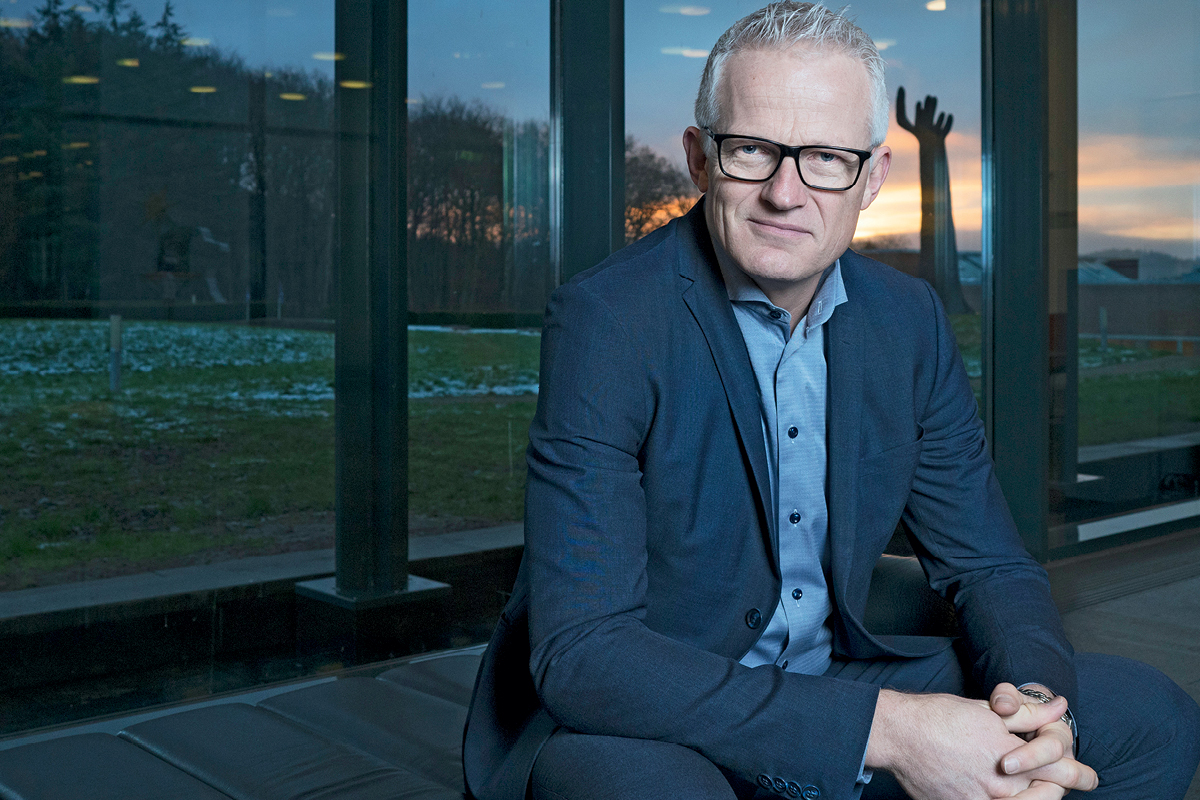
But, scratch away a little, and the similarities start to appear – and go beyond their shared country of origin. Despite incredible success, both Danish companies have remained resolutely privately owned.
And, respectively, make meaningful contributions to society, “whether that’s the world’s best learning and play experiences in the hands of hundreds of millions of children or the sale of 17 million pumps every year, which helps significantly reduce energy consumption and brings water to those who need it,” the Grundfos CEO tells The CEO Magazine.
This sense of purpose lies at the heart of both brands, as does performance. “The combination of being passionate about what you do while still running a healthy business that is able to invest for the long term is something I learned at LEGO and can also be applied here at Grundfos,” Mads says.
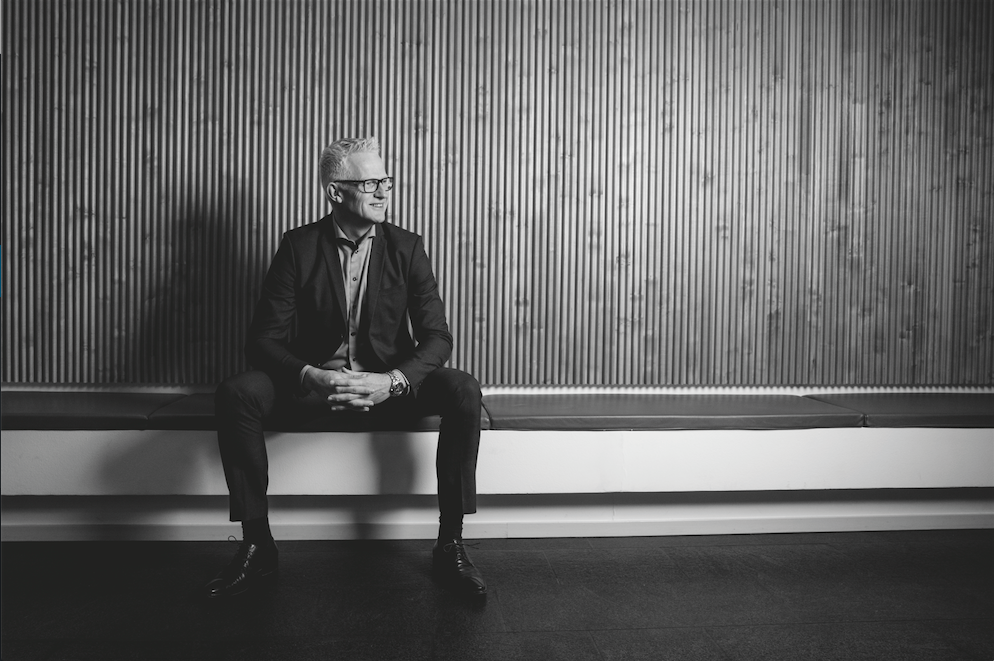
It’s a big step to go from bringing imaginative toy construction sets to market to helping implement water solutions in some of the world’s poorest communities. So, what compelled Mads to move on from LEGO in 2014 after 23 years of service and lofty positions such as Executive Vice President and Chief Marketing Officer?
Though a long-standing advocate for fighting the world’s water crisis, he admits, at first, to having “no idea about the potential for what I thought was just a ‘pump’ company”. As he delved further, however, two crucial aspects caught his attention.
“I learned that 10% of the world’s electricity consumption is used for water pumps, which is actually more than is used for lighting anywhere in the world,” he explains. “Even more importantly, I was told that figure could be cut in half thanks to existing technology.”
Since Grundfos is the world leader in pump technology, he calculates that, indirectly, the company has the ability to reduce world electricity consumption by one to two%.
Grundfos has always taken a long-term and very socially responsible perspective, which has made us what we are today.
“Next to climate change, I have no doubt that water supply is the biggest challenge humanity faces,” he says, adding that 2.1 billion people don’t have access to safely managed drinking water and millions are dying every year due to waterborne diseases.
As he found out more about the business, he says it dawned on him just how enormous the role was that Grundfos could play in addressing two of society’s largest problems. He was sold. “Grundfos is mainly a pump company, but our ability to make a positive impact in the water space is huge,” he says.
This year marks the 75th anniversary of the company, which was founded by Poul Due Jensen in his home basement in Bjerringbro, Denmark, in 1945. Today, a team of more than 19,000 is behind a business that manufactures 17 million pumps for home and industrial settings as well as water supply, but some things haven’t changed since day one.
“Poul was passionate about helping people to solve their problems,” Mads explains. “Being the technical genius that he was, in many cases, he actually came up with things that had never been done before.”
The company remains privately held (the primary owner is the Poul Due Jensen Foundation, although employees and the Due Jensen family also have a small share), which has allowed it to maintain focus on the big picture.
Supplying hope
When asked to recall his most memorable moment in the role so far, Mads doesn’t miss a beat. “That’s easy,” he responds. “It was a visit to a small village three hours’ drive south of Nairobi, Kenya. We had to navigate dirt roads to get there.” Together with World Vision, Grundfos had provided the community with a water ATM powered by solar-driven pumps. “I sat down with a family and they told me what a difference having access to water had made to their lives,” he explains. Every year, Grundfos and its partners help bring a basic clean water supply to more than one million people. “Until then, that was primarily a number,” he continues. “But when I heard this family of five tell me their story, it suddenly went from being a job to an obligation.”
“We don’t have any external shareholders expecting quarterly reports and short-term earnings,” he says. “Grundfos has always taken a long-term and very socially responsible perspective, which has made us what we are today.”
Pioneer is a term that is frequently associated with the Grundfos founder, and it’s one that Mads says has great meaning inside the company. “It means that you either have the ability and/or the courage to do something that others don’t,” he explains.
And this is just one of the ways the legacy of Poul, who died in 1977, still lives on. “From when it was just a one-man enterprise to today, we’ve always had the capability to come up with solutions and products that shape an entire industry.”
In a world of accelerating global challenges and digital disruption, Mads believes it’s his obligation to harness these latest technologies to continue to create pioneering solutions – “all while we uphold the socio-responsible, long-term thinking that we have always had”.
Six years into the role and he has been credited with giving the company renewed focus – in 2019, Denmark’s Ledernes Hovedorganisation named him Leader of the Year. Profits have also sharply increased. His arrival in the sector has coincided with the its increasing digitalisation, which he says is the biggest change he’s seen in the industry so far.
“When I joined six years ago, our industry was largely a pump industry and digital technology was an add-on,” he says. “And while today it’s still very much about pumps, we’re also exploring how we can use intelligent solutions that optimise not only the pump, but the entire system, too.”
Sustainability is another area that has seen rapid acceleration during his time on the job, especially with regards to water and climate. “It’s gone from something that only a few were talking about to now where it’s becoming a very important driving force across the entire industry.”
He believes that it’s the companies creating value on both fronts that will survive into the next decade and beyond. “I can’t see those businesses that prioritise short-term profits existing in 10 years because customers are starting to demand something more from the people they do business with,” he reasons.
A business that leads rather than follows – it’s here that he spots opportunity for Grundfos to continue to trailblaze. “We need to meet the demand for a different level of social responsibility and embrace digitalisation. These are the two areas that will shape the industry and define success within it.”
Explained simply, Grundfos is currently on a journey from the pump business to the intelligent water solutions business, where pumps will still play a leading role. “We’re not throwing everything into digital solutions, nor should we,” he says.
“We still need to have the best pumps in the world – which we do – but we also need to constantly innovate the hardware and technology.” Instead, it’s all about balance.
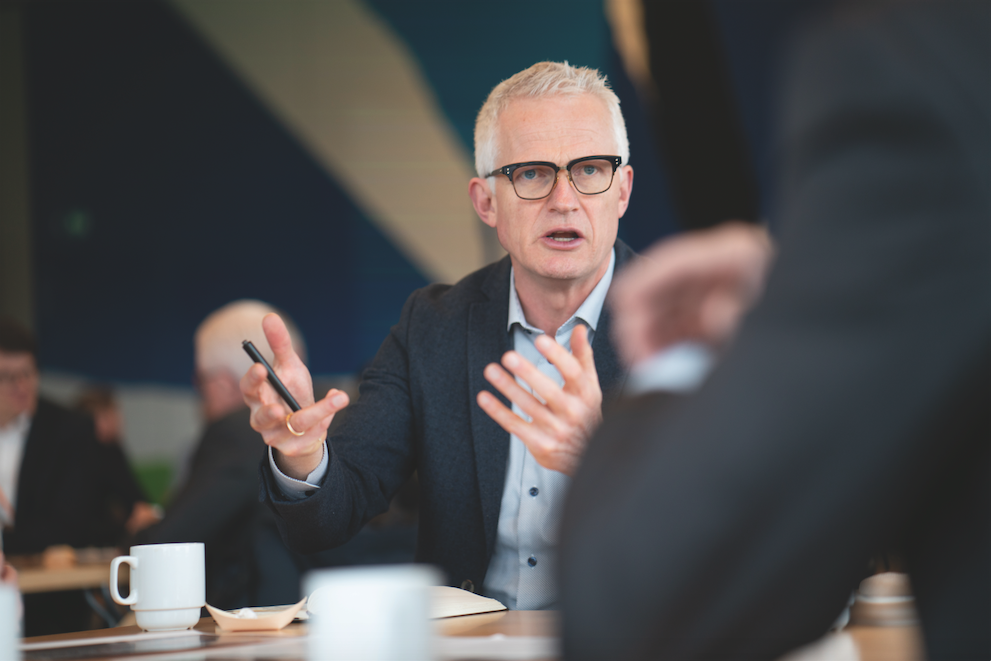
“Our current strategy involves aggressively increasing our spending and our capabilities in digital technology and intelligence while continuing to uphold a very high degree of innovation in our more traditional pump business,” he says.
After all, pumps currently account for 95% of revenue. “Internally, but also with the partnerships we make, the biggest capability building we’re doing at the moment is ensuring a strong digital platform to put on top of our world-class hydraulics and pump ability.”
Mads is enthusiastic for a future in which intelligent solutions can pick up maintenance and service faults before they happen. “The one time people care most about their pumps is when they don’t work,” he says, laughing.
“With intelligent solutions, we can actually predict this and proactively approach our customers with a service to repair their pumps before they break down, in both a home and industrial environment.”
The key, he elaborates, lies in transforming pumps into intelligence sensors that send signals when, for instance, a discrepancy in the vibration pattern is picked up. “Thanks to an IoT connection, a cloud service is alerted, which can then analyse the movement and diagnose what shape the pump is in and what we can do to fix it before it goes wrong,” he explains.
The biggest capability building we are doing at the moment is ensuring a strong digital platform to put on top of our worldclass hydraulics and pump ability.
This is one digital service of tomorrow that already has a very high value today. Are there others? Common in Europe, but increasingly growing in relevance in China, district heating – essentially a centralised heating system that negates the need for a boiler in every home – is already considered one of the most sustainable methods of providing warmth to large areas.
But there’s always room for improvement, especially considering how high the water temperature has to be (up to 85 degrees Celsius, Mads says) to compensate for heating losses that occur between the centralised boiler and the houses.
“A recent acquisition of ours is a small company that makes intelligent solutions for district heating systems around the world,” he says. “This technology can, on average, reduce temperatures by 15 to 20 degrees Celsius, saving on both energy and costs for the utility.”
Perhaps the most exciting digital innovation is what the company has christened the AQtap water ATM, a distributor that ensures safe and clean drinking water. Using credits purchased via their mobile phone, communities across sub-Saharan Africa are able to fill up with a fresh water supply.
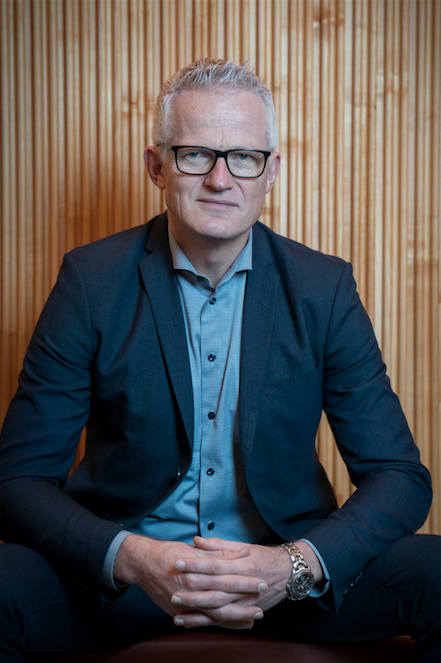
“This is much more than just a pump, it’s a digitally enabled solution that helps distribute water safely in one of the world’s most disadvantaged regions,” he says.
Put to work in partnership with NGO World Vision and Kenyan telecommunications firm Safaricom (whose mobile money transfer service M-Pesa is what powers the payment system), the goal has been to transfer administration of each outlet back to the local community.
“Our role is to supply the right technology for the job, but not to make an ongoing profit,” he notes. At Grundfos, aiming high is encouraged, rather than being looked down upon, and Mads explains that there are a couple of big innovations he aspires to – although he knows they are not the sort to be achieved overnight.
“We have many dreams, but one of the things we dream of is how do we – and our industry in general – become much better at decentralised water treatment and water cleaning?” he asks.
From industrial companies to small cities and hotels, one complex area he spends time contemplating is: “How can we make water solutions, including pumps, treatment and cleaning, that work so well that you can basically reuse the same water?
Across the board
Grundfos, Mads, who has a Master of Science in Business Administration from Aarhus University, Denmark, is on the Board of Directors of two Danish firms: Bang & Olufsen and Tulip Food Company. He’s also a member of the UN’s Business and Sustainable Development Commission and was recently made chairman of the Danish government’s climate partnership for production companies.
“I also think about how we can use digital technologies and intelligence to radically reduce energy consumption of not only the pump itself, but also of the entire system that it’s a part of,” he continues.
“If you take a shopping mall in Dubai, for example, where a cooling system is imperative, that system comprises a pump, but also a valve, a control panel and many other parts.” His dream is that, instead of reducing the energy consumption of every component part, an intelligent solution could be discovered that reduces the usage overall.
“That would make a radical contribution to the world’s climate change,” he says. Instead of simply selling pumps, it’s his wish that his peers in the industry join him in thinking about intelligent sustainable water solutions.
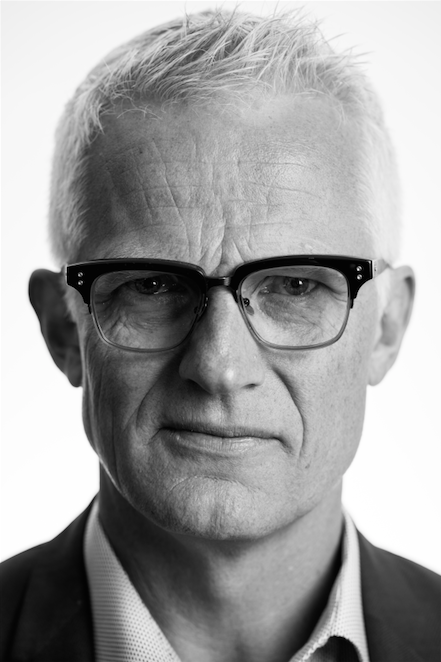
“Yes, we’re all competitors,” he acknowledges. “But we all need to think about how we can help solve the world’s problems and work together as an industry. That way, we could have a much bigger impact than we do today.”
But he also appreciates that, even united, they can’t solve every problem on their own. “We need to be much more open to partnering across industries and with digital and technology companies,” he says, citing the firm’s digital partnership with Siemens as an example.
“The starting point is how can we be better at solving the world’s challenges? Then it will be very clear that we need other capabilities. Some of them we can build, but others we have to make partnerships and just find creative solutions that we never could do alone.”
Currently, Grundfos has a global presence in 56 countries – a figure that increases when taking into consideration its network of partners, distributors and dealers.
“We’ve been blessed over the past few years to see relatively strong growth,” he says, adding that the US and Asia – driven in particular by the Chinese market – are the markets that have “grown nicely”.
The combination of urbanisation and strong economic growth in places like China leads to an increase in demand for Grundfos products, he explains, adding that there is a greater need for pumps in urban settings than in rural environments.
But, as the demand for energy-efficient solutions increases, Mads says that strong results are also being recorded in countries traditionally considered to be low-growth regions, such as the UK, Germany and the Netherlands.
We all need to think about how we can solve the world’s problems and work together.
“In general, that’s because we’re seen as the leader in this, globally,” he points out. When you sell 800,000 different pump combinations to serve an array of uses, it’s impossible to nominate your bestselling product.
“We sell pumps for use in buildings and private households, as well as for industry and in water utility,” Mads says. “They can be made from titanium, extremely tough stainless steel, normal steel or cast iron. I had no idea that there were so many types of pumps in the world before joining Grundfos, but once you think about it, pumps are everywhere. They’re just hidden very well.”
Proudly supported by:


